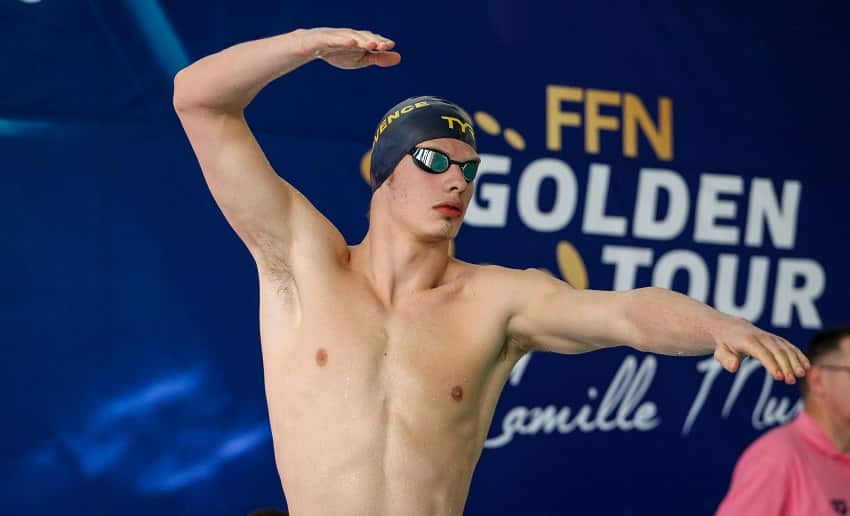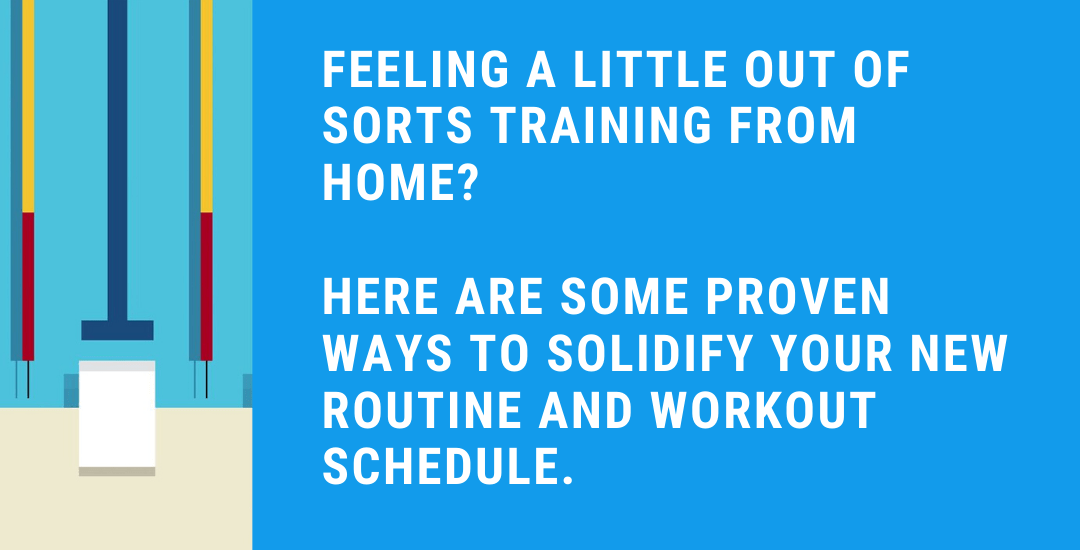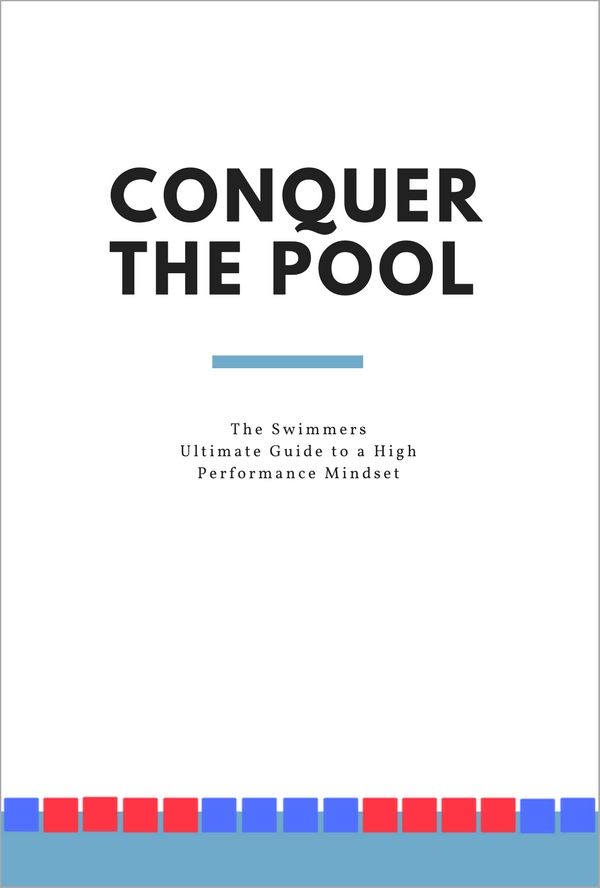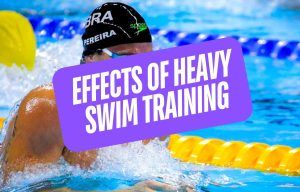Staying motivated and focused on our goals in the water without being able to train in a pool is tough.
While training at home sounds easy, making new habits and routines isn’t always a piece of cake.
If you are struggling a little bit staying consistent and motivated during Dryland-palooza 2020, here are some tips for how you can make working out at home a solid part of your routine and schedule.
Let’s go:
1. Make starting the goal.
How many times have you stared down a brutal swim practice, or a lung-busting main set, and been filled with that paralyzing sense of dread and resistance? A few times, right? And how did you respond?
By focusing on that first lap. By reducing the scope of what lays ahead by focusing on the very next step.
The ability to focus on the instigation of something as opposed to the execution is a wildly powerful way to form habits. (Here’s some fun research that shows just how effective it can be.)
Instead of trying to hype yourself up to do a 60-minute workout, 10k run, or 20 reps of race-day visualizations each day, focus on that first step:
- “Each day at 9:30am I will put on my gear and lay out my workout equipment.”
- “Each afternoon at 3:00pm I will lace up my running shoes and jog to the end of the block.”
- “After dinner I will sit down with my mental training workbook and go over my visualization checklist.”
The goal is showing up and starting. Things have a funny way of taking care of themselves from there.
2. Set a schedule for yourself.
Working out when you “feel like it” is a tough way to go about being consistent about your workouts.
How motivated and “feeling like it” you are will depend on a bunch of stuff: How much (or little) sleep you got last night. The food you’ve been using as fuel. How stressed you are. Whether or not there is another season of Tiger King coming out.
Instead of working out by the seat of your pants, sit down and put together a realistic schedule for your training.
First thing in the morning? Sure! Night-owl? Go late-night. You could even pencil in your workouts for when you’d usually be at the pool sucking down chlorinated air.
One study found that participants who had a clear when and where with their workouts were far more likely to stick to a workout schedule compared to participants who had no schedule.
3. Balance stress and rest.
Getting stronger, faster, and more awesomer is about finding that nice little balance between work and recovery.
For swimmers who are unaccustomed to doing this much dryland, getting the same “volume” and work in will be a big shift. Just because you were swimming 20+ hours a week a couple months ago doesn’t necessarily mean you will be able to do that kind of work out of the water today.
Make sure you are recovering and resting between your workouts and progressing at a realistic pace.
When the light turns green, you don’t smash the gas pedal. You accelerate at a measured rate. Do the same with your workouts.
4. Do what you can with what you have.
It’s a bummer not to be able to hit the pool these days. Gyms too. There’s no doubt about that.
But the good news is that you don’t need a world-class strength and conditioning center or your local aquatic facility to get a good sweat.
Whether you are stuck in the confines of your home, have a yard, or can jog up and down the street, put together a dryland workout with what you have.
Push-ups. Squats. Run. Bike. Stairs. Hill sprints. There are countless ways you can challenge yourself that only require a good attitude.
Of course, if you want to play with some toys, there are lots of different types of dryland equipment for swimmers.
Just because you don’t have everything at your disposal doesn’t mean you can’t still do something.
Some of my favorites include a doorway-mounted pull-up bar, foam roller, StretchCordz, or even a PowerLung, my preferred tool for developing stronger lungs and breathing muscles.
5. You don’t need to be perfect.
One of the biggest shocks of this whole thing has been how frazzled I have felt without my usual routine.
Even though I am training far less (five workouts from home, or in the local pool’s parking lot—yes, that’s how bad my withdrawal has been), compared to my old schedule, it’s been a pain-in-the-pull-buoys to make the routine stick.
Which is hilarious considering that pre-pandemic I was swimming 7-9 times per week with some weight lifting sessions, and keeping this schedule more or less for years on end.
The struggle to replace my old schedule with something new speaks to the power of routine and habits—once we build them, they can make super-human workloads seem casual.
There is some good news: Good habits are hard to start, but after a couple weeks of consistent application, they take hold and it gets “easier.” As mentioned earlier, it’s the starting and focusing on one rep at a time that creates exponential results down the road.
More good news: You don’t need to be perfect. Habit-formation research has demonstrated that one-off misses aren’t a deal breaker. Do your best each day to show up, limit your misses (especially streaks of them), and the routine will take root.
 Mental training for swimmers made simple.
Mental training for swimmers made simple.
You spend a lot of time working on your technique, training your butt off, and doing the little things outside of the pool right. All so that you can perform like a boss on race day. So why not also maximize what is happening between your ears?
Conquer the Pool: The Swimmer’s Ultimate Guide for a High-Performance Mindset is a 300-page workbook that was written with one purpose in mind: to help swimmers develop legendary mindsets.
Whether it’s learning how best to focus while crushing the laps in practice, how to use self-talk to navigate “impossible” main sets, how to keep their head on straight on when injured, or the best mental and emotional state to be in on race day, Conquer the Pool will help swimmers unlock their best performances.
Used and trusted by some of the top clubs and swimmers on the planet and written with the feedback of 200+ head coaches, Olympians, former world record holders and NCAA champions. We also do team orders for clubs, including a healthy team discount and custom branding.



 Mental training for swimmers made simple.
Mental training for swimmers made simple.











